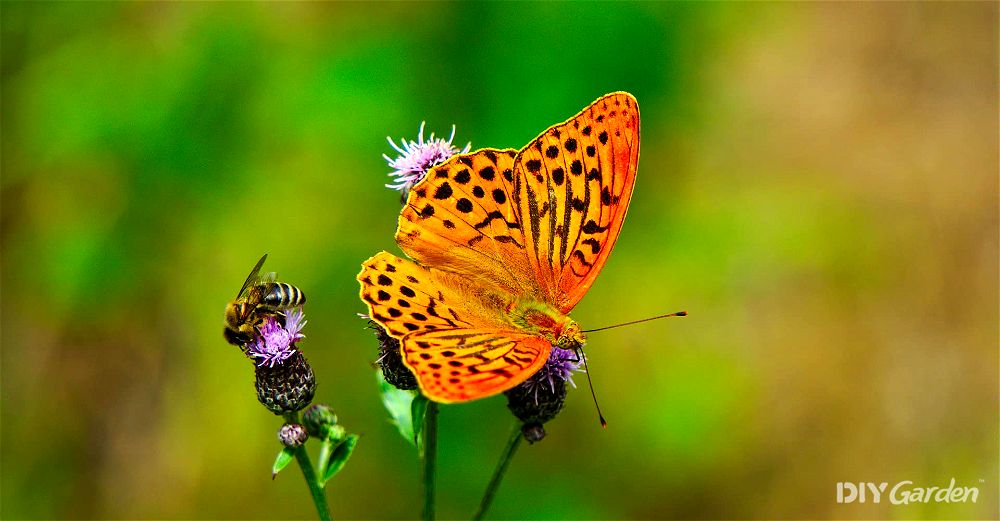
Your garden should be a natural oasis of beauty and calm. You want it to thrive and grow, but that’s not possible if you’re unable to attract the right types of wildlife. In the natural world, British wildlife like bees, birds and even lizards help to control pests, but also to help ensure that flowers are pollinated. Of course, they can also add immense beauty all on their own. If you’re struggling with how to attract wildlife to your garden, here’s how you do it…
Birds
Birds are lovely creatures in their own right, and they can add colour and life to any garden. However, they’re also an important part of pest control, and can keep damaging insects from your precious plants. One way to ensure that you attract garden birds to your garden is to provide a source of drinking water. A simple bird bath can suffice (but make sure to clean it regularly), or you could go for a small pond if you prefer. Food is also an important consideration – bird feeders can be basic and utilitarian or extravagant and beautiful. Finally, bird boxes can provide nesting areas for permanent residents.
Butterflies
Butterflies flit beautifully through the air, lending grace and beauty to any garden. In order to attract these wild creatures, you’ll need a food source. Like bees, butterflies need pollen to survive, and that means you’ll need to plant flowers, and plenty of them. Crocus is an excellent choice, as is mahonia and even blooming ivy. Avoid hybrid cultivars that don’t produce much pollen, though.
Bees
Bees sustain most of the world’s food sources by pollinating vegetable plants. Whether you want to ensure a bountiful harvest for yourself, or you’re just interested in helping prevent colony collapse disorder, you can plant pollen-rich flower varieties to feed the bees around your home.
Hedgehogs
Hedgehogs look for areas where there is pre-existing shelter. A teepee of logs can make an excellent home, or you could go full on and build a hibernaculum out of a log pile or box, lined with newspaper to keep them warm and dry. As a note, hedgehogs require food to make it through the winter. It’s easy enough to feed them dry cat food, actually. Just make sure that you’re feeding the right animals, as leaving food out randomly can attract unwanted animals to your garden.
Ladybirds
Ladybirds are important insects – they’re predators that prey on pests in your garden. You can attract them by planting flowers and vegetables, but also by providing them with shelter from the elements. A bundle of bamboo sticks tied together and then placed in the crook of a tree provides them with a home (lacewings will also be attracted to this habitat).
Frogs and Newts
Frogs are amphibians, and while they’ll help to control the insect population within your garden, and provide a soothing lullaby on warm summer evenings, you need to ensure that you have a good water source for them. A pond is ideal here. It needn’t be massive. Even a smaller pond can provide more than ample moisture for most frogs. Again, make sure to keep your pond clean throughout the year, or you could find that it breeds pests like mosquitos, or scums over with mould and algae. Newts, like frogs, are amphibians that prey on insects, but require a source of fresh water to keep themselves moist.
Additional Tips for Attracting Wildlife to Your Garden
We’ve covered some pretty specific tips for attracting wildlife to your garden, but I think it’s important that you know a bit more. For instance, try to avoid chemicals if possible, and let nature do its thing. If you’re struggling with garden pests, attract predators to help control them rather than spraying your plants with pesticide.
Use natural fencing rather than metal, such as a living willow fence, or a hedgerow. These are completely natural, and provide animals and insects with a habitat while defining the areas in which they are set.
As a final note, try not to create an overly manicured look. Not only is this artificial, but it may actually drive some types of British wildlife away from your garden. The most successful gardens are those that are as natural as possible. Recreate the natural landscape and you might be surprised at how quickly that wildlife shows up.






